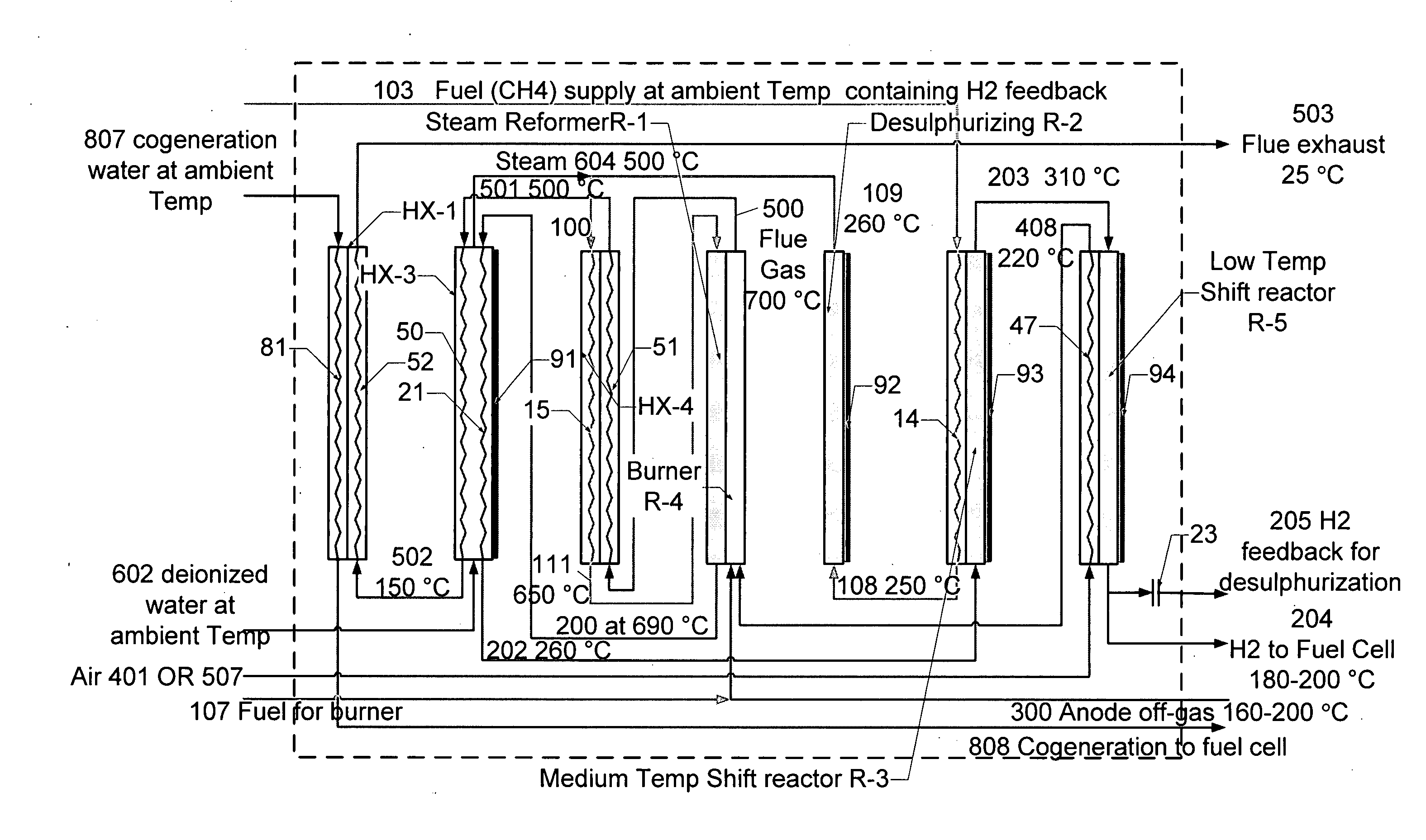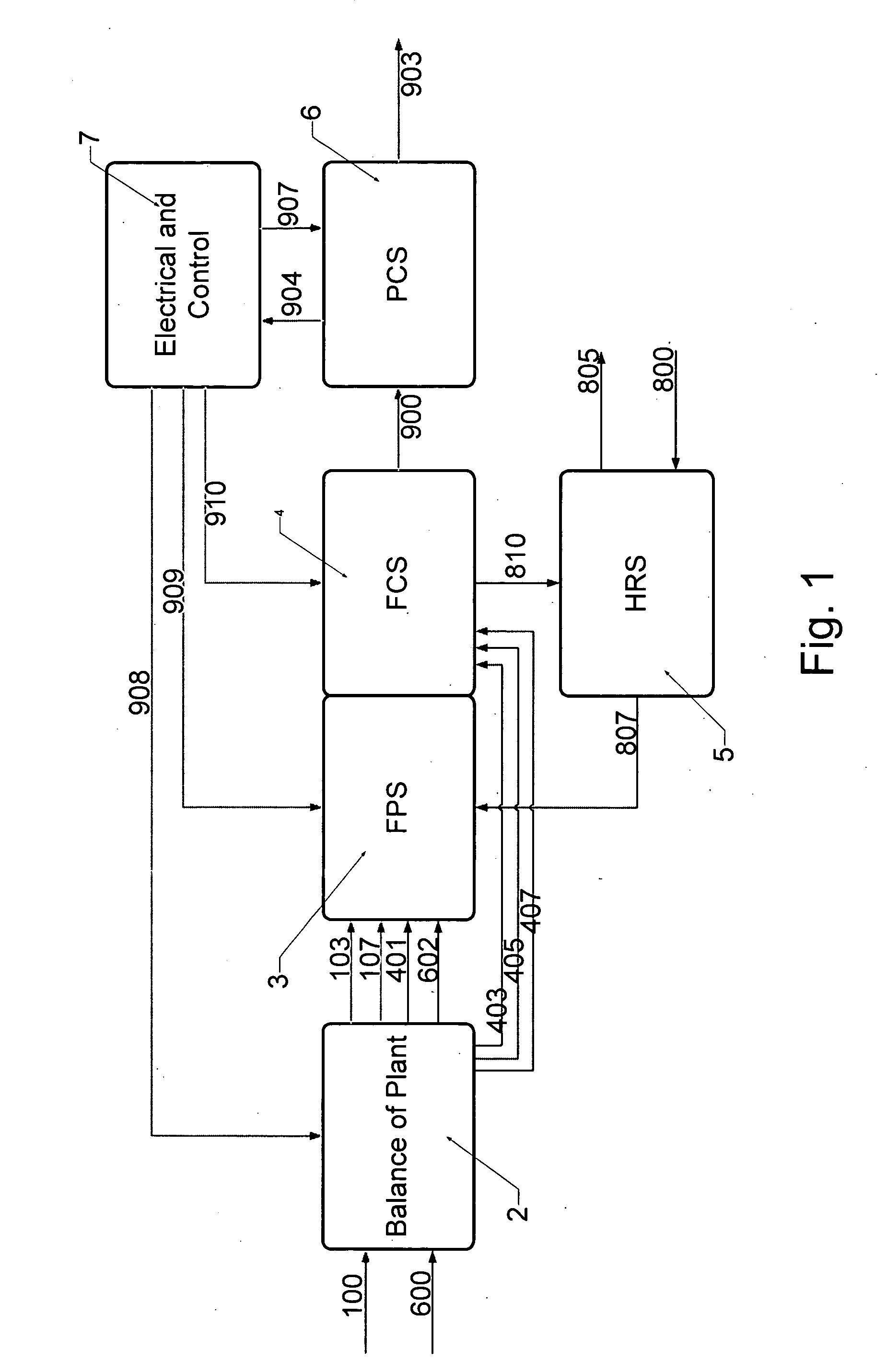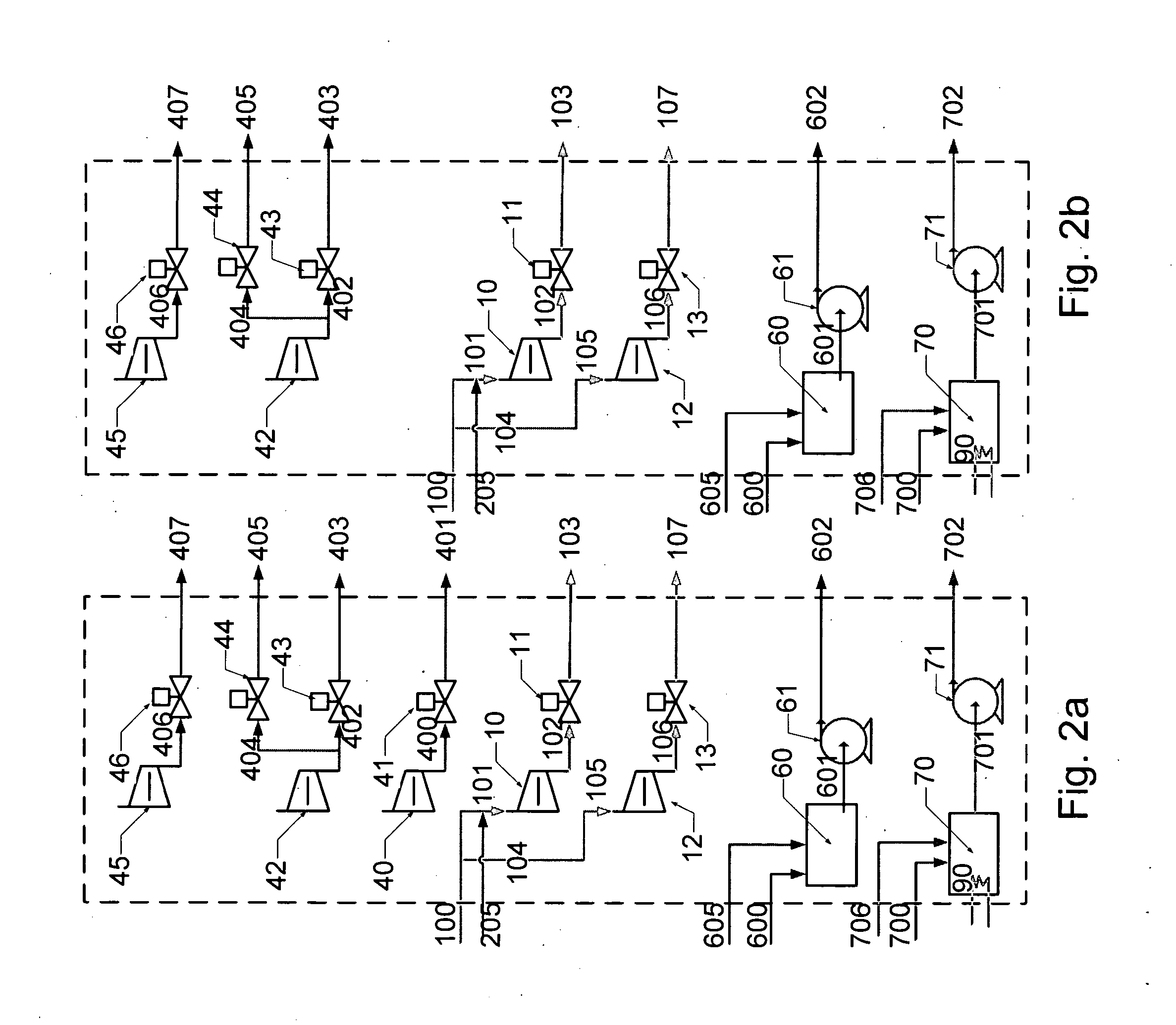Combined heat and power system
- Summary
- Abstract
- Description
- Claims
- Application Information
AI Technical Summary
Benefits of technology
Problems solved by technology
Method used
Image
Examples
Embodiment Construction
[0052] Throughout the description, the term “membrane electrode assembly” (MEA) will be understood as consisting of a solid polymer electrolyte or ion exchange membrane disposed between two electrodes formed of porous, electrically conductive sheet material, typically carbon paper or carbon cloth but not limited thereto. The MEA contains a layer of catalyst, typically in the form of platinum, at each membrane / electrode interface to induce the desired electrochemical reaction. The term “low temperature PEM” or “low temperature MEA” refers to proton exchange membrane or membrane electrode assembly materials that are suitable for operation in temperatures of about 60 to 85° C., and such materials include those commercially available from 3M, W. L. Gore and Associates, DuPont and others. The term “high temperature PEM” or “High temperature MEA” refers to proton exchange membrane or membrane electrode assembly materials that are suitable for operation in temperatures of about 120 to 200°...
PUM
 Login to View More
Login to View More Abstract
Description
Claims
Application Information
 Login to View More
Login to View More - R&D
- Intellectual Property
- Life Sciences
- Materials
- Tech Scout
- Unparalleled Data Quality
- Higher Quality Content
- 60% Fewer Hallucinations
Browse by: Latest US Patents, China's latest patents, Technical Efficacy Thesaurus, Application Domain, Technology Topic, Popular Technical Reports.
© 2025 PatSnap. All rights reserved.Legal|Privacy policy|Modern Slavery Act Transparency Statement|Sitemap|About US| Contact US: help@patsnap.com



